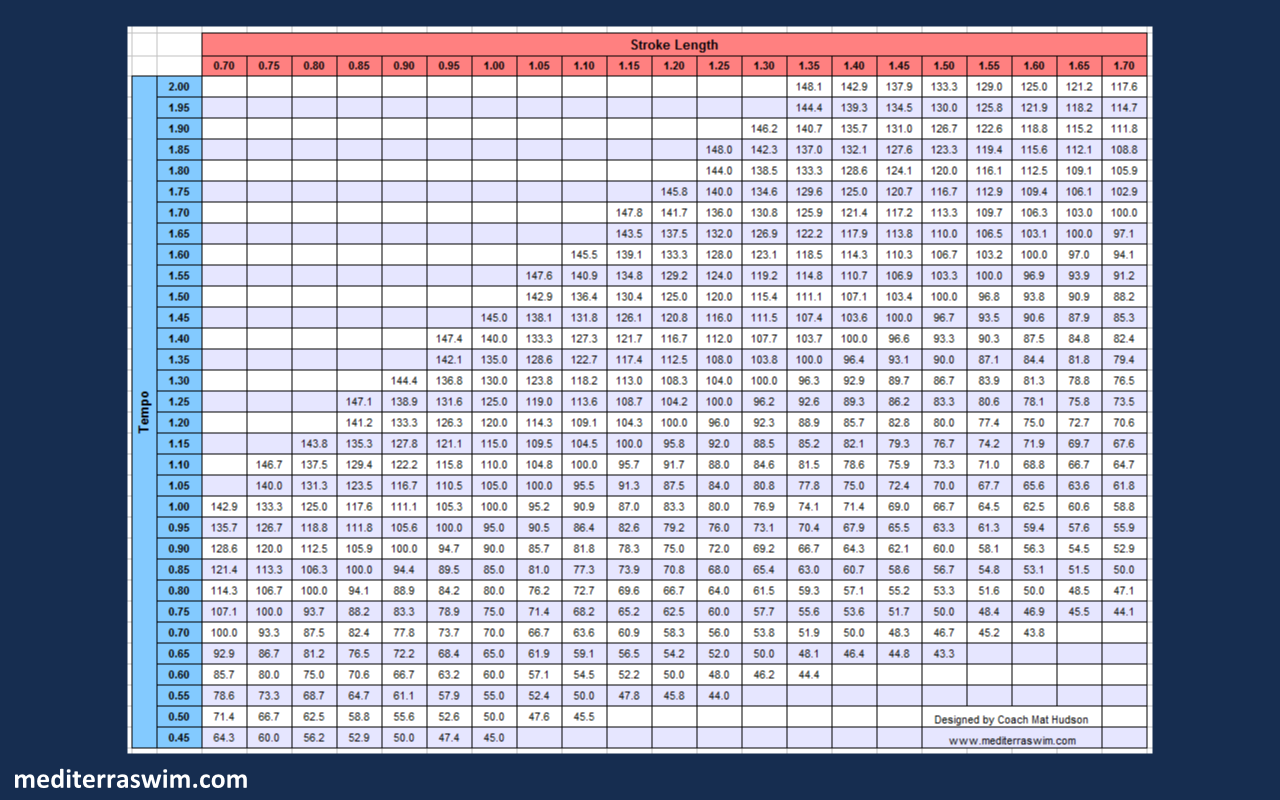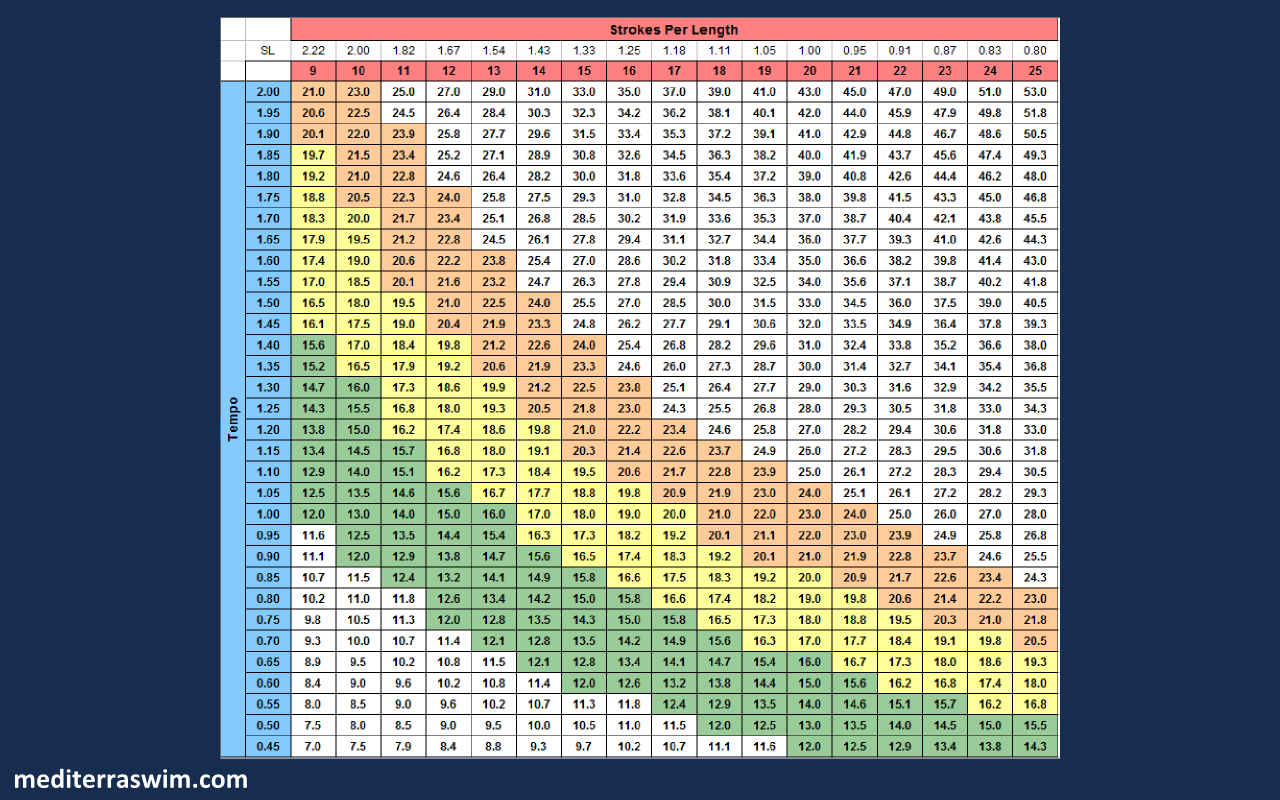by Admin Mediterra | Sep 24, 2020 | Tempo
Before choosing a suitable tempo you first need to have established an suitable stroke per length (SPL) for your purposes. Then you can consider what tempo is appropriate with that SPL, and how much expansion you will need in your tempo range to be able maintain that SPL x Tempo combination.
You may view these charts to get some idea of what pace is produced by various SPL x Tempo combinations:
As you increase tempo you will be challenged to maintain SPL consistently. Tempo control adds another level of complexity for the brain. When you are new to tempo control, while focused on holding your stroke to the beep, if your SPL count goes (too high) out of your optimal stroke count, or Green Zone, likely something fell apart in your technique. If you are using an SPL lower than your Green Zone, you may likely find it more difficult to achieve higher Tempos – there is a critical relationship between your ideal SPL and your ideal Tempo. It gets harder, if not impossible to work at either extreme.
Your goal is to keep your SPL in the Green Zone, while working to gradually increase the Tempo you can maintain inside that Green Zone, and work on this in short repeats. You will first work on being successful in short lengths before expecting to be successful on several uninterrupted lengths.
by Admin Mediterra | Sep 24, 2020 | Metrics
This chart shows Stroke Length x Tempo combinations to create Pace for 100 meters (in seconds). This chart is intended for open-water (no walls, no flip-turns or interruptions to the stroke), therefore
Pace = (100m/SL) x Tempo
For example: Maria uses a Stroke Length of 1.05 (red numbers, vertical column) and a Tempo of 1.10 seconds per stroke (blue numbers, horizontal row) to create a Pace of 104.8 seconds or 1 minute 44.8 seconds per 100 meters.

To convert your pool SPL into universal Stroke Length number:
Pool Length – Glide Distance = Swim Distance
Swim Distance / SPL = SL
For example:
Maria swims in a 25 meter pool. She glides 5 meters from the wall to begin her first stroke #0. She has an average SPL of 19.
25m – 5m = 20m Swim Distance
20m / 19 SPL = 1.05 meters per stroke.
**
Keep in mind that if you are training to achieve a certain Pace for open-water swimming, you need to train for that Pace. The speed of flip-turns and push-offs in the pool affect the Pace equation. The distance you actually swim (take strokes) in the pool is what is training you for that open-water event, not the flip-turns and push-offs. So I recommend that you pick your SL (SPL) x Tempo combination based on the setting (pool or open-water) that you are preparing to race in.
by Admin Mediterra | Sep 24, 2020 | Metrics
This chart shows SPL x Tempo = Pace combinations for a 25 meter pool. It assumes the swimmer will push-off and glide for 5 meters before beginning Stroke #1.

You may have in mind some fixed number for any one of the three variables (SPL, Tempo, or Time) and then you can look at you options for the other two variables connected to that by the chart.
For example, Juan wants to achieve a pace of 24 seconds per 25 meters. His SPL range is 17-19. So, looking at the rows that correspond to SPL 17-19 and 23-24 seconds, shows him that he must train with Tempo in the range of 1.10 seconds (with 19 SPL) to 1.25 seconds (with 17 SPL).


